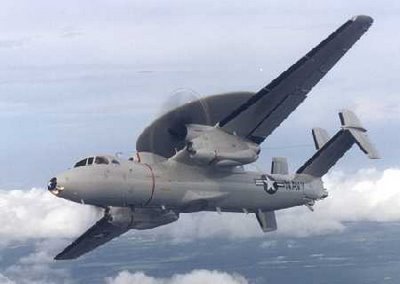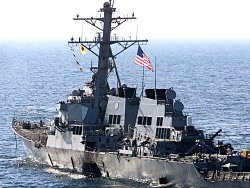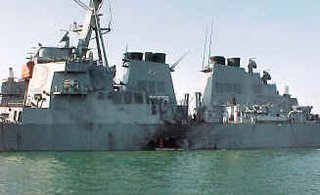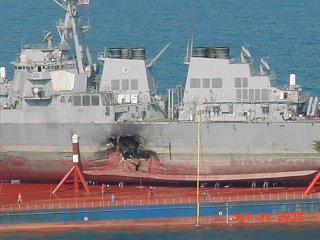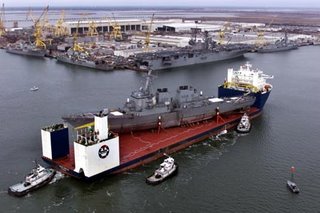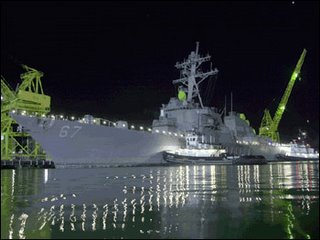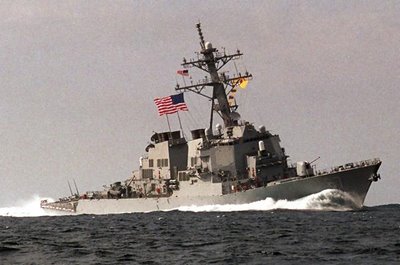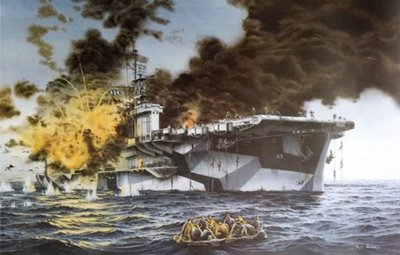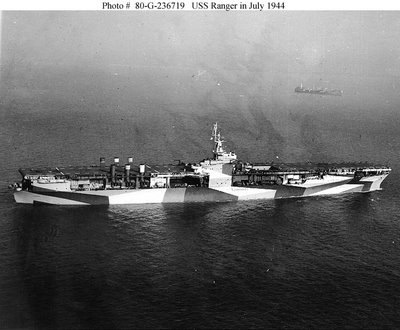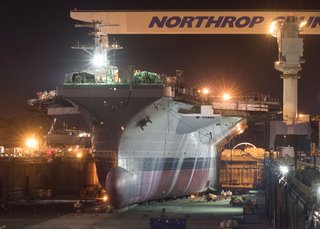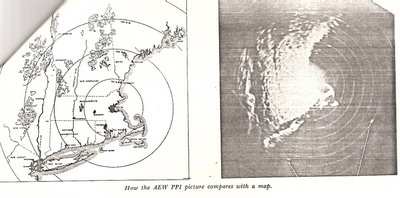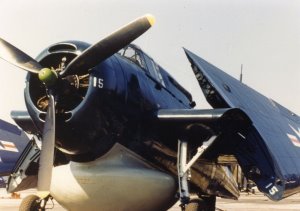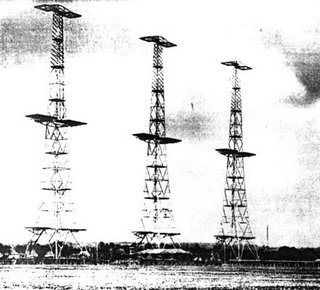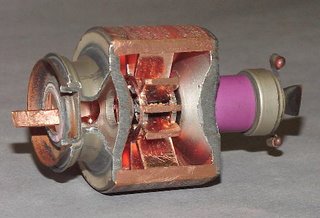SJS note: Aircraft, like cars, stoves, televisions and Tickle-Me-Elmo ®, are products of assembly lines – some more massive than others, but the premise is still the same. Build a lot of something to set standards with common assemblies and a uniform product results. Except when it doesn’t. Every one of us who have slipped the surly bonds has encountered that one aircraft that seemed to have a personality all of its own. If you were the MO (Maintenance Department head) you undoubtedly encountered a family of personalities as you surveyed the flight line (or VIDS/MAF board) – I know I certainly did, and sometimes it was a family not even Dr. Phil could have loved – but that is another story…
Sometimes the aircraft arrived fresh from the factory sporting that ‘tude. Sometimes it came later in life at the (mis) treatment of aircrew and or wrench-turners. The E-2 “RAG” (actually the Fleet Replacement Squadron – “RAG” was a hold over from the old days of Replacement Air Groups where nuggets were trained on their Fleet ride and their elders shed the mustiness of shore-based life in anticipation of returning to the salt-air environment), VAW-120, had a bird dubbed ‘Christine.’ True to her name, Christine evenly matched in temperament the subject of Steven King’s novel of the same name after suffering a major fire on deck. In Mech some time back there was the story of an F-14 that wouldn’t fly straight because it had been overstressed and “bent” as a result. Proof came when it went into re-work and measurements taken on one side did not marry up with the other side.
This is the story of a Mark 1, Mod 0 vanilla E-2C, airframe number A057, Navy Bureau Number 160992, and MODEX (side number) 015; the last of a group of 5 E-2Cs purchased in a multi-year procurement and delivered to the fleet ca. 1980. While with her fleet squadron she had the misfortune of having a chock cart encounter the starboard prop while it was turning. The resultant shrapnel punctured the fuselage in several places, severing hydraulic lines and electrical wire bundles, creating a general mess. Fortunately, no one was injured and no fire ensued. Back in Norfolk she was craned off (a not inconsiderable feat given the size of the E-2C) and towed to hangar SP-2 on the NAS side of the base to await decisions on her future. Given the nature of the damage and time/cost to repair, the decision may very well have been to pull all the salvageable items out and scrap it or use it as a flight deck training airframe. Problem was, the Cold War was getting warmer by the day, E-2’s were in high demand and production was pretty well maxed out at 5/year (on a factory tour to pick up a new aircraft YHS was very surprised to see just how much of the aircraft was hand-crafted, which helped to explain why in later years certain panels, wiring harnesses, etc. that *should* have been interchangeable, were anything but…). So – the decision was made to repair the strike damage and get her back to the fleet.
The repair took longer than expected since the pressurized tube was compromised and as 160992 sat in the hangar, she became a ready source for official and unofficial cannibalization. You see, besides E-2’s, parts in general were in very short supply in the early 80’s, a legacy of the extraordinarily lean Carter years. Squadrons returning from deployment with 3 FMC and 1 PMC aircraft would typically find themselves reduced to maybe 1 PMC and 3 NMC (if not 4 NMC) within a week of their return as their sister squadrons pulled parts to get their aircraft up for work-ups. When a plane was down for a certain period of time, its status became SPINTAC – SPecial INTerest AirCraft; at which point it now had to have parts put back in and a monumental maintenance effort to get it back in the air before the clock ran out – it was well and truly a vicious circle.
This is the point our narrative begins; it is early February 1981, 160992 has reached SPINTAC status and has just arrived in VAW-121’s spaces in SP-1. The Bluetails, who had been at sea, underway for 347 days the previous year (most of it off Iran), are scrambling to meet a new requirement – deployment to Iceland to fill the AEW gap left when the AWACS were pulled to fly patrol in Saudi Arabia during the Iran-Iraq war. The “Bear Aces” of VAW-124 were sent packing with very short notice just prior to the Christmas holidays and were subsequently relieved by a combined deployment of two E-2B reserve squadrons, VAW-88 (West coast) and VAW-78 (East coast). COMICEDEFOR was manifestly unhappy with the older E-2B’s performance and mission availability and demanding an immediate replacement…we join our young LTJG who is now the QAO division officer and a cruise seasoned E-2C mission commander with close to 800 total hours in the aircraft – 550 of which came on the IO deployment alone (note – typical cruise hours for a 1st tour NFO in 1980/81 was about 200-220 hrs).
Walking into the hangar, collar of his flight jacket (illegally) turned up against the bitter wind blowing off Willoughby Bay, the JG stopped to survey the mad scene that was the bay area of the Battle “E” Bluetails (as they had begun to call themselves). Barely back from months on the IKE on Gonzo station, cruise boxes were once again laid out and being packed for another deployment – this time to Iceland.
“Great” he thought “Iceland, mid-winter, colder than Nebraska ever was. Whose bright idea was all this anyway?”
Another gust of icy wind ripped at his legs, easily penetrating the Nomex fabric and layer of thermal underwear he wore underneath as if to accentuate the point. Around the corners of the bay, one of four occupied by the other fleet squadrons still in town, the four Hawkeyes with their distinctive blue and white sunburst on the tail stood-out in the mid-morning gloom. One was being prepped to be pulled out to the flightline for a post maintenance functional check flight (PMCF) – his flight. Well, at least there would be some decent airborne time today as this would be the full “C” profile. This profile required full exercise of the weapons system and would give him ample opportunity to continue building his experience of in-flight trouble shooting – a good 4.5 to 5 hours worth if everything worked out right. Of course it would also involve a check of the feathering system on each side so there would be engine shutdowns to account for as well. Best part was he would be alone in the back so there wouldn’t be anyone to stumble over or have to talk through troubleshooting procedures.
Walking into maintenance control he caught snatches of a conversation, behind the MO’s closed door, of what appeared to be a three-way between the MO, MMCO (Maintenance Material Control Officer) and the Maintenance Master Chief. The MO, known as “Dad” or “Pops” by the JOs because of his age and reminders to any and all near by that “when I was in Fudds (E-1Bs) it was a lot different back then…” was audibly upset about something, especially given the frequent “piece of sh*t” liberally sprinkled through his growing tirade. The MMC said something about “those (something, something) wing maintenance (something)” and on the whole, it didn’t sound good. The door nearly fell off its hinges as the MO burst out of the office, visibly redfaced and clenched jawed with his cover jammed down tight as he headed out of the hangar and towards the Wing Twelve headquarters building.
“Geez master Chief, what was that all about?” the JG queried.
“Wing’s trying to shaft us with a SPINTAC that the RAG should have responsibility for; they say that they’re doing us a ******* favor by giving us a fifth airplane” “ ‘and besides’” his voice took on the very familiar tone of the Wing MO, “ ‘You guys are such a sh*t hot outfit anyway you should be able to handle it with no problem’” It was a poorly held secret that there were certain squadrons the Wing MO favored over others and the Bluetails, for all the accolades they were accumulating, were not one of the blessed.
The MMCO, a short, dark warrant noted for his wry sense of humor and fondness for pulling the MO’s chain just rolled his eyes and gave a short laugh. “Yeah, ol’ Pops just about had a stroke when he found out – and you’re not gonna like it either QAO when that POS comes rolling in the door…”
“Umm, well, guess I’ll worry about that later, right now I have a flight to prep for – let me see the book on 011…” And so forcing the thought of what bit of trouble was coming his way into the back of his mind, he turned to the immediate task of reviewing the thick notebook of aircrew and maintenance gripes on AG 011.
Some while later, as he was trying to link together the seemingly disparate gripes on the high-power side of the radar, the door to maintenance control banged open again with the MO's return. Just as he prepared to say something the phone rang.
“MO, it’s the SDO – says Skipper wants your, ahhh, you up in his office ASAP…” said the young airman apprentice behind the desk.
With a furious scowl the MO wheeled around to make the journey topside to the CO’s office. Returning after a few minutes he re-entered maintenance control, this time a little more restrained. In a resigned voice he said that the Wing MO had jammed it up his butt and Skipper had just broken it off – we were getting BuNo 160992 and we had to get it up and flying, period. Not only that, we would have to do it with a skeleton crew left behind from the Icelandic det and eventually fly it up to Keflavik to join the rest of the squadron. Just about then, a plane captain from RVAW-120 showed up at the door asking where we wanted the new arrival. Pointing at the space just vacated by 011, the MMC said to park it over there.
All activity on the hangar bay ceased as BuNo 160992 was slowly pulled into the hangar. In stunned silence the maintenance troops, chiefs and div o’s of the Bluetails watched as it slowly passed, many dropping their gaze and sadly shaking their heads. Across the way, from the open galley in a sister squadron, came hoots of derisive laughter as they saw who had won the SPINTAC lottery.
What sat before their eyes was an E-2, minus both engines with sandbags sitting in the nacelles and in the open nose (where the missing PDS boxes should have been) to keep it on the nosewheel. Several panels, ailerons, and a couple of rudders also were missing. Heaven only knew what the interior looked like. Adding insult to injury was the months-worth of encrusted pigeon droppings covering the exposed upper surfaces of aircraft, from the dome to the (opened) overhead ditching hatches in the cockpit. A tiny trail of hydraulic fluid lay on the hangar deck, marking her passage.
“Somewhere” the JG heard the MO mutter, “somewhere under all that crap is a pony and we have to find it, won’t we Will…” he said looking directly at the QAO.
“Oh great” he thought – “yeah, this is going to be one for the books if it doesn’t kill us in the process…” he replied. Turning to the stairs he headed topside for the brief wondering what other mischief the Fates held in store for him. Somehow, he thought, they’re just getting started…
To Be Continued
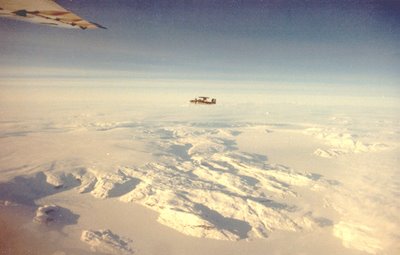
(Yes, that is Greenland down below -- not too green, eh?)
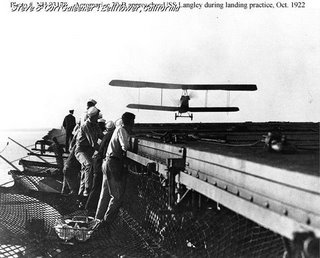 Already an accomplished aviator (Naval Aviator #7), LCDR Chevalier had pioneered the installation of catapults on the Navy's battleships and piloted the first plane to be launched by catapult in 1916. In 1917, he commanded the first naval air station in Dunkerque, France during WW1. In recognition of his aviation and leadership skills he was given charge of 100 aviators-in-training to develop and teach launch and landing techniques from an underway ship. In so doing, he used a variety of methods, to include a barge off Anacostia Naval Base in Washington DC and a turntable, similar to what the British used, at Willoughby Point on the Norfolk Naval Base.
Already an accomplished aviator (Naval Aviator #7), LCDR Chevalier had pioneered the installation of catapults on the Navy's battleships and piloted the first plane to be launched by catapult in 1916. In 1917, he commanded the first naval air station in Dunkerque, France during WW1. In recognition of his aviation and leadership skills he was given charge of 100 aviators-in-training to develop and teach launch and landing techniques from an underway ship. In so doing, he used a variety of methods, to include a barge off Anacostia Naval Base in Washington DC and a turntable, similar to what the British used, at Willoughby Point on the Norfolk Naval Base.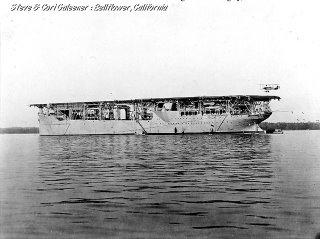 LCDR Chevalier trapped aboard Langley (CV-1) while flying an Aeromarine 39-B (s/n 606). As testimony to the experimental nature of the arresting gear on the Langley, after landing, the Aeromarine nosed over, but Chevalier was uninjured.
LCDR Chevalier trapped aboard Langley (CV-1) while flying an Aeromarine 39-B (s/n 606). As testimony to the experimental nature of the arresting gear on the Langley, after landing, the Aeromarine nosed over, but Chevalier was uninjured. 


